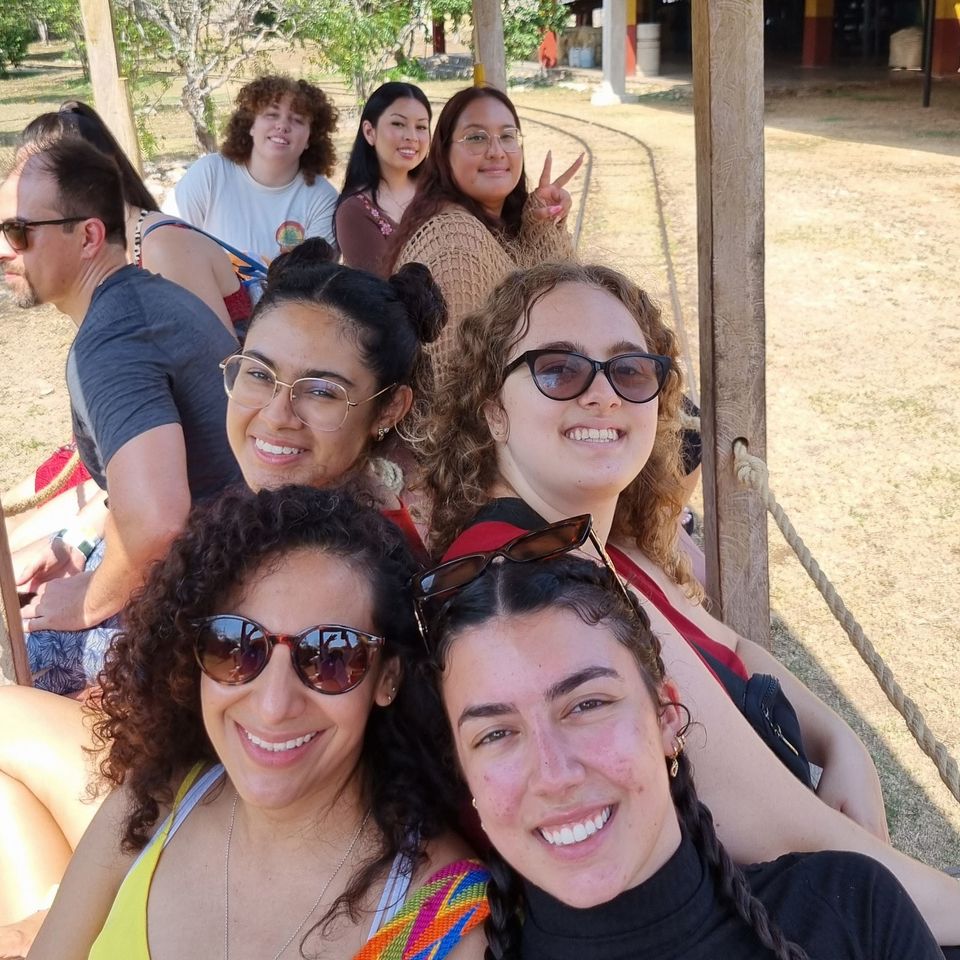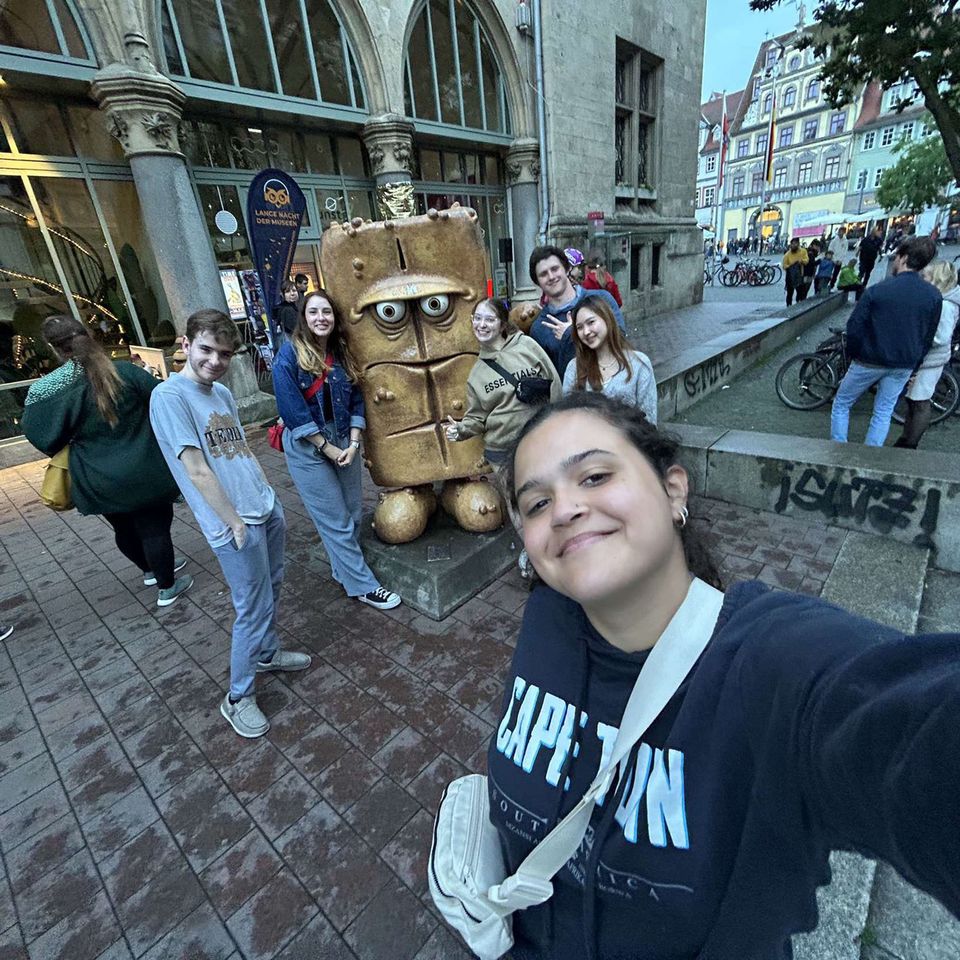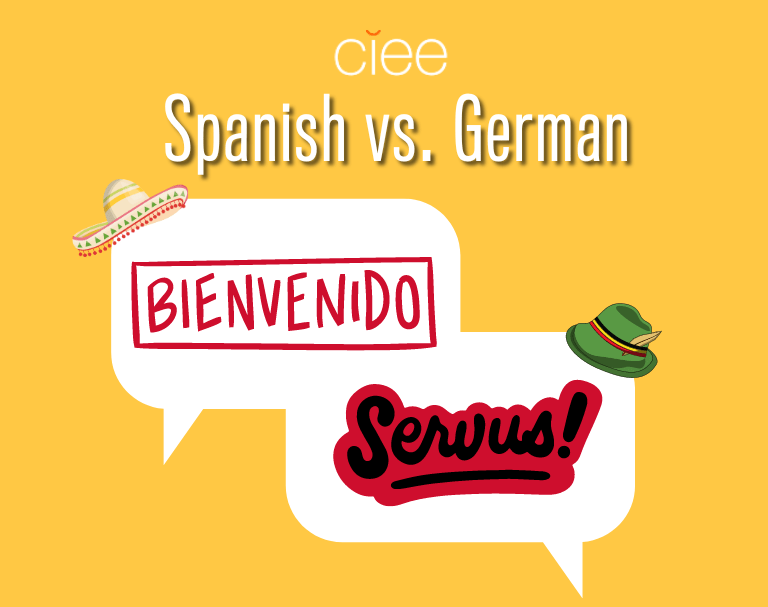Spanish vs. German: Which is Better?
Considering learning a new language, like Spanish or German, during an upcoming study abroad adventure? You’re in the right place!
Follow along as we take a closer look at these fascinating languages and detail some exciting CIEE programs where you can dive into learning German vs. Spanish and enhance your intercultural communication skills along the way.
Read More: 10 Best Foreign Language Programs
Spanish vs. German: Quick Review
Let’s start with some of the basics of Spanish vs. German languages! While both are interesting and exciting to learn, they are pretty different.
For one, Spanish is considered a Latin language, while most of German is regarded as an Indo-European language (although most experts agree there is some Latin influence in German). Many believe that Spanish originated from the Iberian Peninsula, located around the southwest corner of Europe, including modern-day Spain and Portugal. Unsurprisingly, German originated from Germany, though some language experts believe the language may have roots in other Eastern European countries like Ukraine. Talk about a rich history!
Presently, around 96 million people worldwide speak German, while around 500 million people speak Spanish. Most German speakers reside in Germany, but the language is also widely spoken in Austria, Switzerland, and Liechtenstein. All in all, when comparing Spanish vs. German, a lot of people around the world speak both languages!
Spanish is spoken frequently in many countries, including Mexico, Colombia, Argentina, Spain, and tons more. Because Spanish is commonly used throughout many countries around the world, there are many dialects and varieties of the language, and the same goes for German too!
Read More: The 6 Best Places to Learn Spanish Abroad
Languages have fascinating histories that have been shaped by culture, geographical shifts, education, and other social factors. Pretty wild, right?

Common Spanish vs German Phrases
When comparing learning German vs. Spanish language, what better way to help you decide than by reading about some common phrases in both languages? Review some of these sayings below; they’ll be an especially helpful place to start before jetting off to your study abroad destination!
Spanish Phrases
- “Hola, ¿comó está?” meaning “Hello, how are you?”
- “Buenos días” and “Buenas tardes” meaning “good morning” and “good afternoon”
- “¿Comó te llamas?” meaning “What’s your name?”
- “Por favor” and “gracias” meaning “please” and “thank you”
- “¿Dónde está el baño?” meaning “Where is the bathroom?”
- “¿Puede ayudarme?” meaning “Can you help me?”
Read More: Top 10 Spanish Slang Words and Phrases You Need to Know
German Phrases
- “Hallo, wie gehts?” meaning “Hello, how are you?”
- “Danke” and “bitteschön” meaning “thank you” and “you’re welcome”
- “Wo ist die toilette?” meaning “Where is the bathroom?”
- “Wie heiben sie?” meaning “What’s your name?”
- “Mon” meaning “good morning” or “hello”
- “Können sie mir helfen?” meaning “Can you help me?”
Read More: Top 20 German Slang Words and Phrases You Must Know
Don’t get too overwhelmed just by looking at some of these phrases – during your study abroad program, you’ll be formally learning Spanish vs. German, and you’ll be immersed in a culture that mostly speaks one of the languages. This makes it an excellent way to absorb a foreign language and get lots of good practice in!

Is German or Spanish Better to Learn?
Learning German vs. Spanish is entirely up to you and your goals! There isn’t one that’s better to learn than the other. They’re both intriguing languages. If you’ve been itching to do a study abroad trip to Germany and learning the country’s official language is an added bonus, take up German! Or, if you’ve always wanted to learn Spanish because many of your friends speak the language, diving into Spanish is your best bet.
How Long Does It Take to Learn Spanish vs. German?
If you still haven’t quite nailed down your goals for learning a new language, try assessing German vs. Spanish difficulty.
For native English speakers, the U.S. Department of State sorts Spanish as a Category I Language, meaning it’s one of the easier languages to learn, estimating that it takes about 600-750 class hours to achieve language proficiency.
German is considered a Category II Language, meaning it’s typically more difficult to learn than Spanish, but not by much. Experts estimate it takes approximately 900 class hours to achieve German language proficiency.
To better understand these language categories, let’s look at other languages, like Japanese and Arabic. These languages are considered Category IV Languages, meaning they are very difficult for native English speakers to learn, requiring 2,200 class hours to achieve proficiency.
Keep in mind that learning a new language is a lifelong endeavor – think about all the English words or grammar rules you have yet to discover as a lifelong English speaker! Learning Spanish vs. German will come with its own set of challenges, but it’ll be worth the effort.

Where Can I Learn German with CIEE?
If you’ve made up your mind and decided to pursue German, you’re in luck with CIEE! We offer several study abroad programs in Germany’s capital, Berlin, where you can enhance your German language skills and learn more about its fascinating origins.
Read More: The Ultimate Guide to Studying Abroad in Germany
Germany
As a vibrant cultural hub featuring astonishing art and architecture and a booming economic and business scene, Germany is an ideal study abroad location to discover almost anything, including countless museums, theaters, restaurants, and music venues, all while enhancing your understanding of the German people and their rich history.
Check out some of our Germany study abroad programs below:
- Global Internship
- Summer Global Internship
- Global Architecture + Design
- January in Berlin
- Summer in Berlin
- Open Campus Block
There’s plenty to choose from!
Where Can I Learn Spanish with CIEE?
CIEE has many study abroad programs and destinations where you can learn Spanish! Spanning Spain, Costa Rica, the Dominican Republic, Mexico, Argentina, and Chile, you’ll find a program you love while getting the chance to learn the local language and culture.
Read More: Santiago vs. Buenos Aires: Which is Better?
Spain, Costa Rica, Dominican Republic, Mexico, Argentina, Chile
Take a look at some of our Spanish language immersion programs, ranging in Spanish language proficiency across several different countries, to find which program makes the most sense for you. And heads up, there are a ton of options! We recommend narrowing your search by selecting your top one or two Spanish-speaking countries first.
- Summer Global Internships Language Immersion in Barcelona, Spain
- Summer Global Internship Language Immersion in Seville, Spain
- Summer Intensive Spanish Language in Alicante, Spain
- Liberal Arts in Madrid, Spain
- Liberal Arts in Barcelona, Spain
- Advanced Liberal Arts in Barcelona, Spain
- Business + Culture in Barcelona, Spain
- Advanced Liberal Arts in Seville, Spain
- Communications, New Media + Journalism Spanish in Seville, Spain
- Business + Society in Seville, Spain
- Liberal Arts in Seville, Spain
- Liberal Arts in Alicante, Spain
- Summer Intensive Spanish Language in Buenos Aires, Argentina
- Summer Community Public Health in Buenos Aires, Argentina
- Liberal Arts in Buenos Aires, Argentina
- Summer Community Public Health in Santiago de los Caballeros, Dominican Republic
And the list goes on and on!

Spanish vs. German: What’ll it Be?
If you’re choosing between learning Spanish vs. German languages, you’re in luck with CIEE Study Abroad, where you have virtually endless opportunities to explore some incredible global cities and fully immerse yourself in a new language and culture.
What are you waiting for? Start exploring now!
Related Posts
2 Best CIEE Travel Grants for College Students
If you’re planning for a study abroad adventure, chances are you’re starting to get organized and assess what needs to be done ahead of your travels. And one of the... keep reading
"Running as a lifestyle", Andrea Adam Moore, CIEE Center Director
Andrea Adam Moore is the Director of the CIEE Center in Berlin. She is one of the real "berliners" of the team, but also very connected to USA, after living... keep reading
Postcard from Abroad: Learning to Leave My Bubble in Berlin, Germany
By Vincent DiFonzo Almost every time I ride on Berlin’s metro system, the U-Bahn, I am reminded of one of the many little quirks of living in Germany—the German stare... keep reading



